Gold investors, it’s time to let go of gold miners
When it comes to investing in gold, many investors are faced with a choice: physical gold or gold mining stocks. While both provide exposure to the yellow metal, they come with distinct characteristics and risk profiles. Physical gold has long been a reliable store of value, offering stability and acting as a hedge against inflation and market uncertainty. Gold miners have also at times been pitched as sharing similar qualities, while providing some leveraged exposure to the gold price. However, gold miners also present additional layers of risk, tied not only to gold prices but to market conditions and idiosyncratic risks. For investors seeking a safer, more predictable way to protect and grow their wealth, physical gold often proves to be the superior choice. In this article, we’ll explore why the market has moved on from gold miners, and how owning gold directly can outshine the complexities and risks associated with gold miners.
Key takeaways
- Gold miners were once the preferred exposure to gold, however with the innovation of physical gold ETPs, they have fallen out of favour.
- Gold miners have underperformed over the past 20 years, offering limited growth despite a five-fold increase in gold price.
- Gold continues to be one of the best diversification tools for the risk-conscious investor with low correlation to traditional assets and a tendency to rally in times of market uncertainty.
Access: The legacy of Gold miners
Prior to gold ETFs, retail investors and advisers had very little options when it came to adding gold to their portfolios. Purchasing physical gold coins and bars were an option, however it often carried excess security risk and also came with significant transaction costs. Gold miners, like most metal miners, correlated with the price of what they mine and as such became the preferred access point for exchange-traded gold. This meant that gold miners traded on a consistent, and significant, premium to their net tangible assets in the 1990s.
This however, all changed in 2003, when ETF Securities, now Global X ETFs, launched the first ever physical gold ETP. As retail and adviser capital migrated out of gold miners and over to gold ETFs, the premium that gold miners once demanded has collapsed. This can best be seen in the structural decline of gold majors’ price-to-book ratios. In the 1990s gold miners could trade on price-to-book ratios of five or more – indicating the market greatly valued gold-producing tangible assets. Today that ratio sits at a little over 1.5 and would be lower if not for gold’s recent rally. For reference, the price-to-book ratio of the S&P 500 has gone in the opposite direction, growing from ~2.5x to over 5x over the same period.
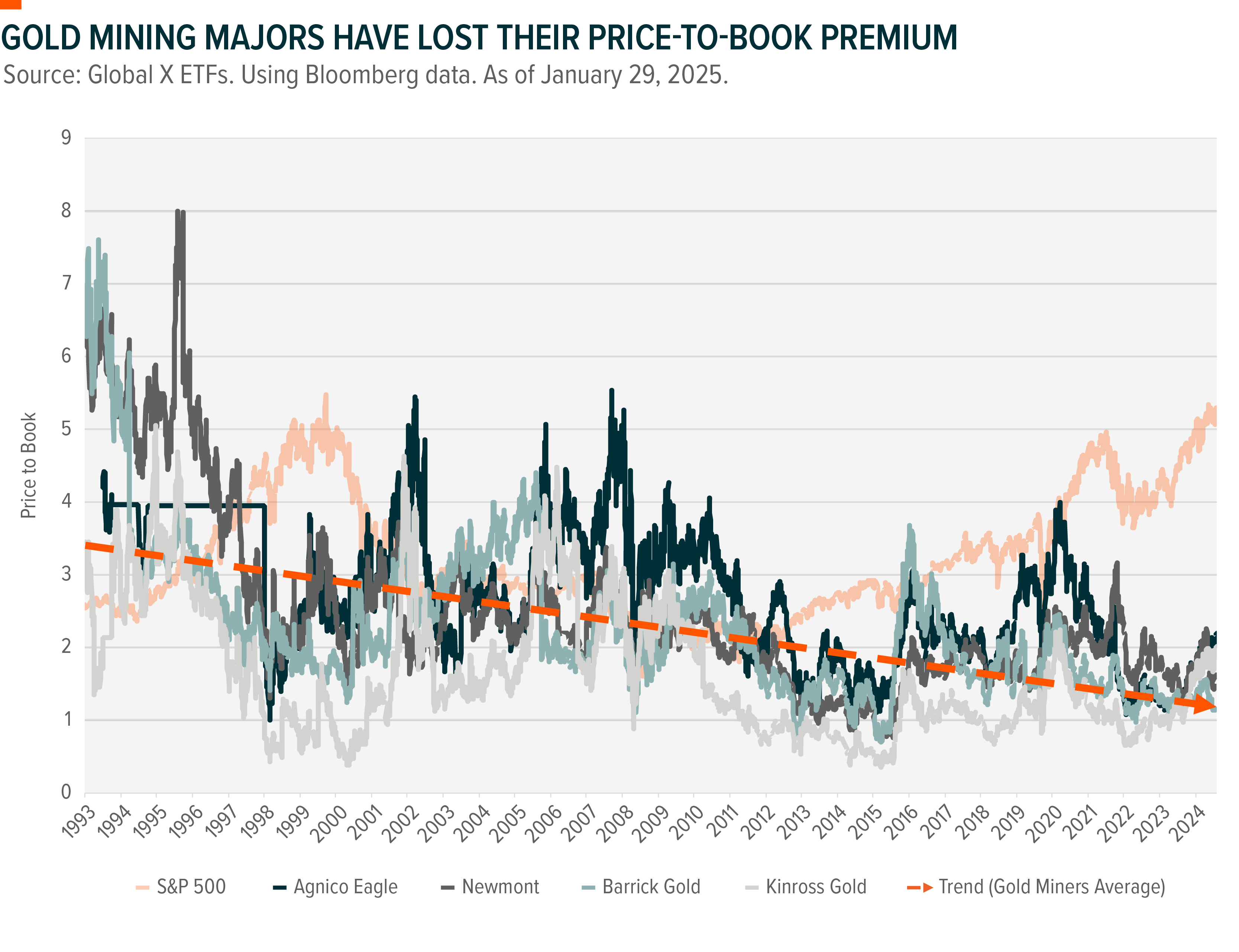
Furthermore, there is little sign that this will reverse or change in the future. If anything, the rise of ESG (Environmental, Social, and Governance) mandates among institutional investors could provide another headwind for gold miners. Gold mining scores poorly on ESG screens given its carbon footprint and history of environmental issues, which can lead to its exclusion from ESG-conscious institutional investor portfolios. Ultimately, gold miners appear to be firmly on the way out as a substitute for gold exposure.
Performance: Gold vs Gold miners
It’s often said that gold miners offer a leveraged way to gain exposure to gold prices. The logic behind this is straightforward: mining companies typically exhibit high operating leverage—when gold prices rise, their profit margins expand, leading to outsized earnings growth. But does this translate to superior long-term performance compared to holding physical gold?
Since the inception of our exchange-traded physical gold product, the answer has been a resounding “no.” While gold miners have consistently demonstrated leveraged price action relative to spot gold—evidenced by a beta of 1.65 over the past 20 years—their actual price performance has lagged significantly.(1) Investors who simply held gold would have seen their investment more than sextuple, whereas a broad index of global gold miners has struggled to even double the initial investment.
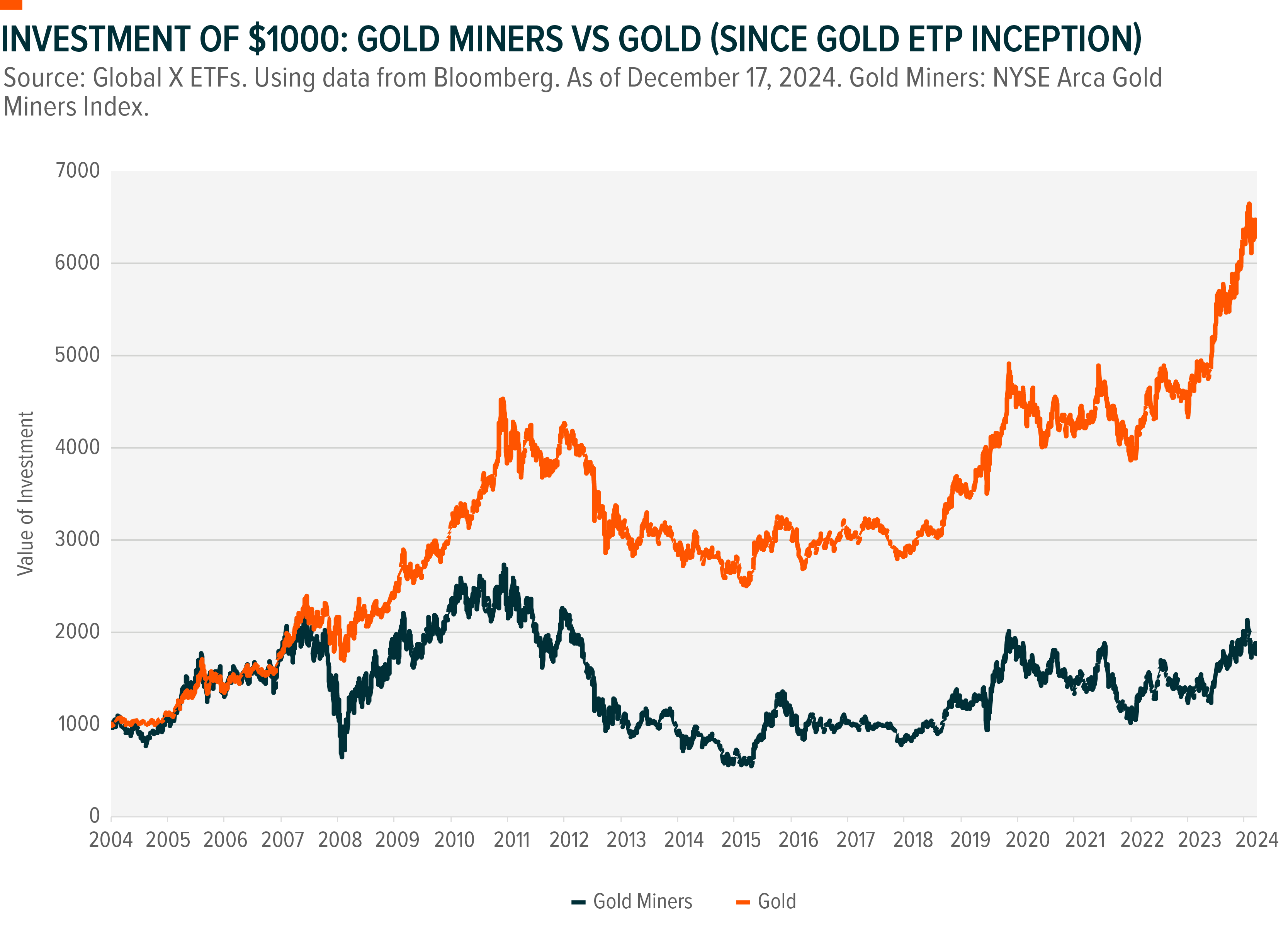
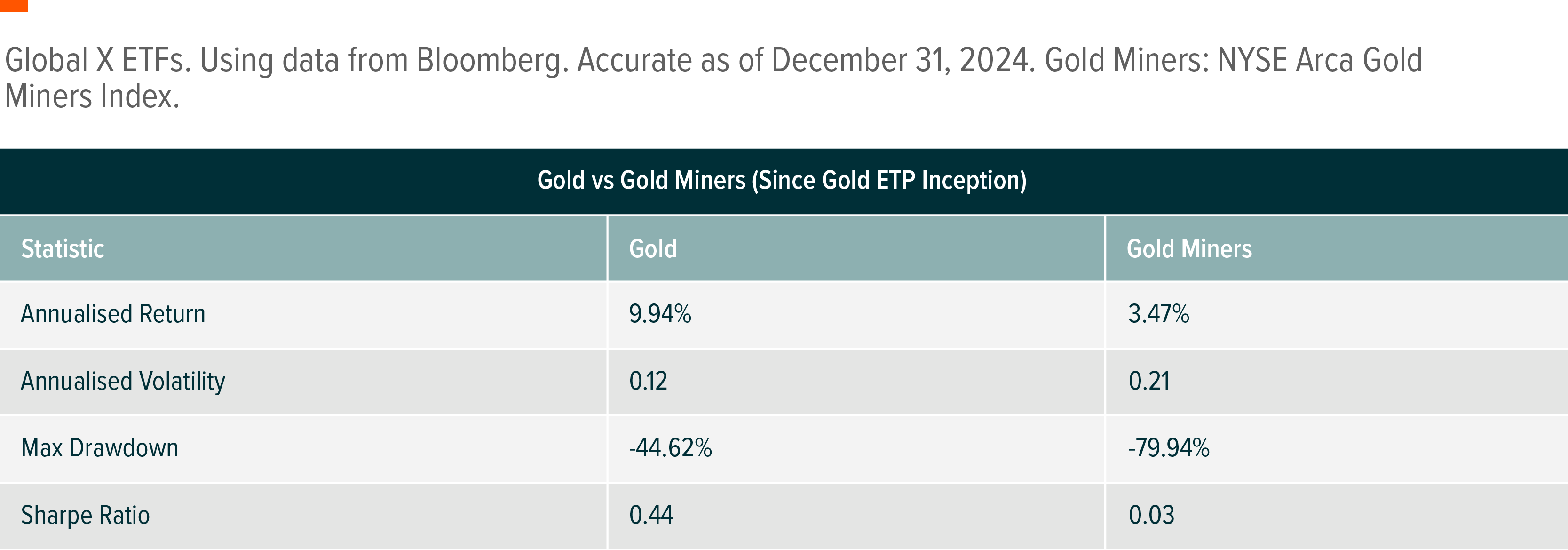
Even in the short term, gold miners have struggled to deliver outsized returns relative to gold. Physical gold surged over 40% over a historic rally between 2022-2024, defying its traditionally negative correlation with interest rates amid worsening geopolitics, record central bank purchases, and persistent inflation. Yet, gold miners lagged, returning less than 20%, as high interest rates tightened profit margins and pressured the debt-reliant industry.(2) Indeed, since the inception of physical gold ETPs, miners have struggled to prove themselves a worthy alternative to direct gold exposure.
Diversification: The real power of Gold
While gold can be traded tactically or held for capital appreciation, its primary role in a portfolio is diversification. As a widely accepted store of value and a trusted safe-haven asset, gold exhibits low correlation with traditional assets like equities and bonds. These qualities make it a powerful diversification tool, as gold tends to appreciate during periods of market volatility or geopolitical tension.
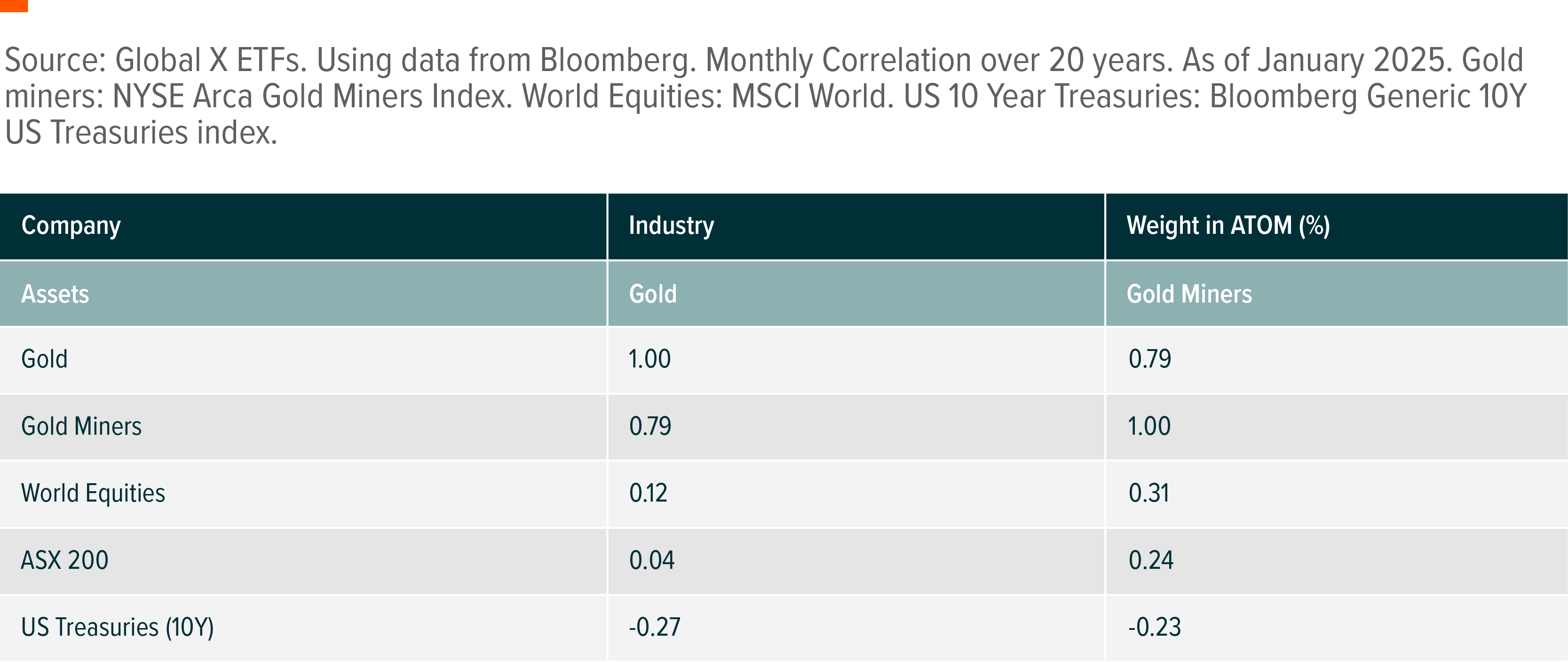
Gold miners also provide some diversification benefits, but not to the same level as gold. As equities themselves, they have historically exhibited higher correlation to broader stock markets and Australian equities over the past 20 years. This means that during severe global market drawdowns, gold miners have failed to provide the same defensive benefits as physical gold. For risk-conscious investors seeking a true portfolio diversifier, gold miners once again fall short compared to physical gold.
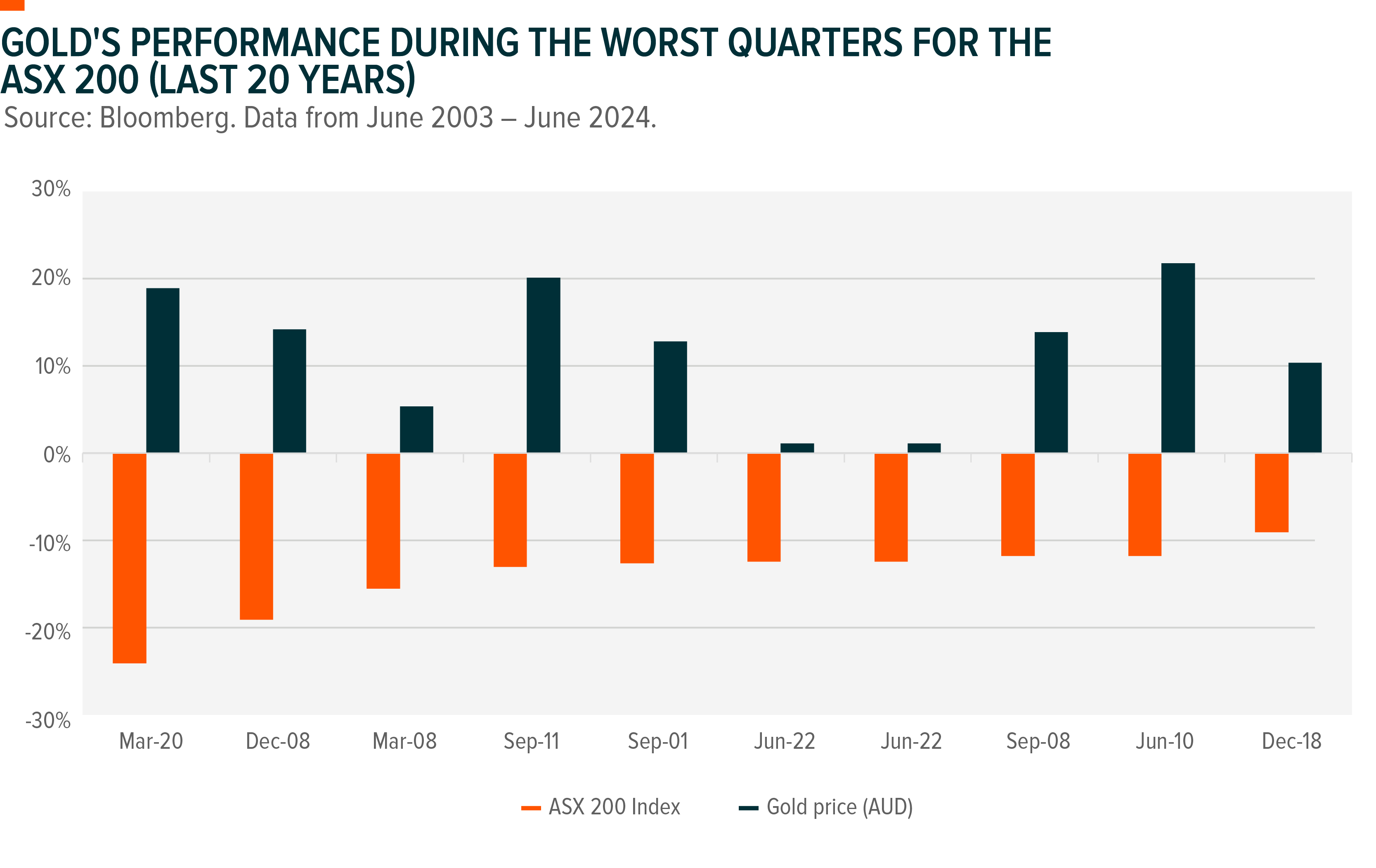
Conclusion: A nugget in the hand is worth two in the mine
Once the go-to proxy for gold exposure, miners have steadily lost their appeal in the wake of physical gold ETPs, which provide a more direct, cost-effective, and risk-conscious way to invest in gold. While gold miners still exhibit leveraged price movements relative to gold, their long-term performance has lagged significantly, failing to capitalise on a multi-decade bull market in gold prices.
Moreover, gold’s diversification benefits remain unmatched, offering low correlation with traditional assets and proving its resilience during periods of market stress and geopolitical uncertainty. In contrast, gold miners—being equities themselves—have higher correlations to stock markets and have failed to provide the same defensive qualities.
With ease-of-access, performance, and diversification all leaning in favour of physical gold, gold miners can no longer be considered the gold proxies they once were. For those seeking true exposure to gold’s enduring value, holding the metal directly through an ETF is a compelling choice.
Related funds
The Global X Physical Gold (ASX: GOLD) invests in physical gold via the stock exchange, offering higher liquidity and removing the need for investors to personally store bullion.

The Global X Gold Bullion ETF (ASX: GXLD) invests in physical gold via the stock exchange at a low management fee for long-term investment.

1 topic
2 stocks mentioned
2 funds mentioned

